

Gautam Sharma
2025 Porsche 911 GT3 review
7 Months Ago
Karl Brauer gets an early taste of the all-new Mercedes-AMG SL in the USA before the reborn roadster arrives Down Under later in 2022.
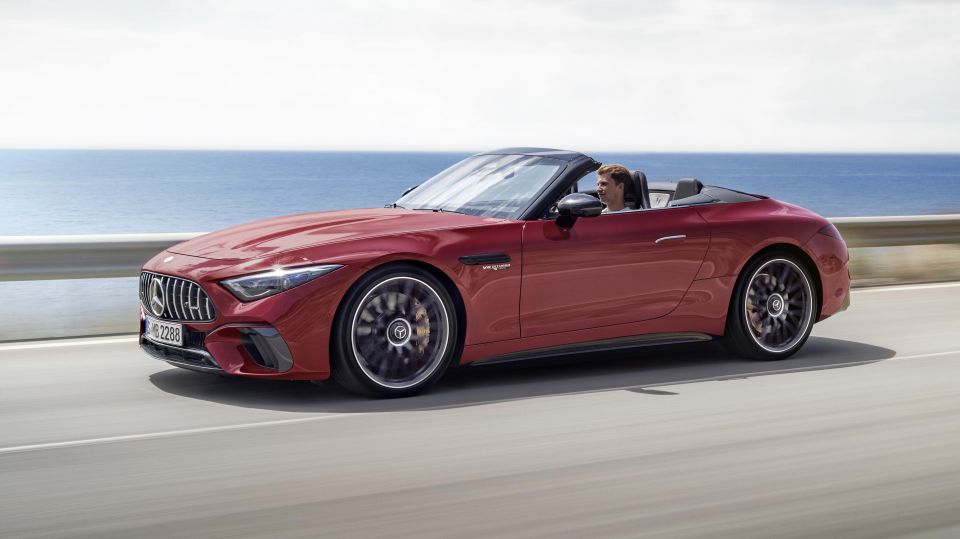
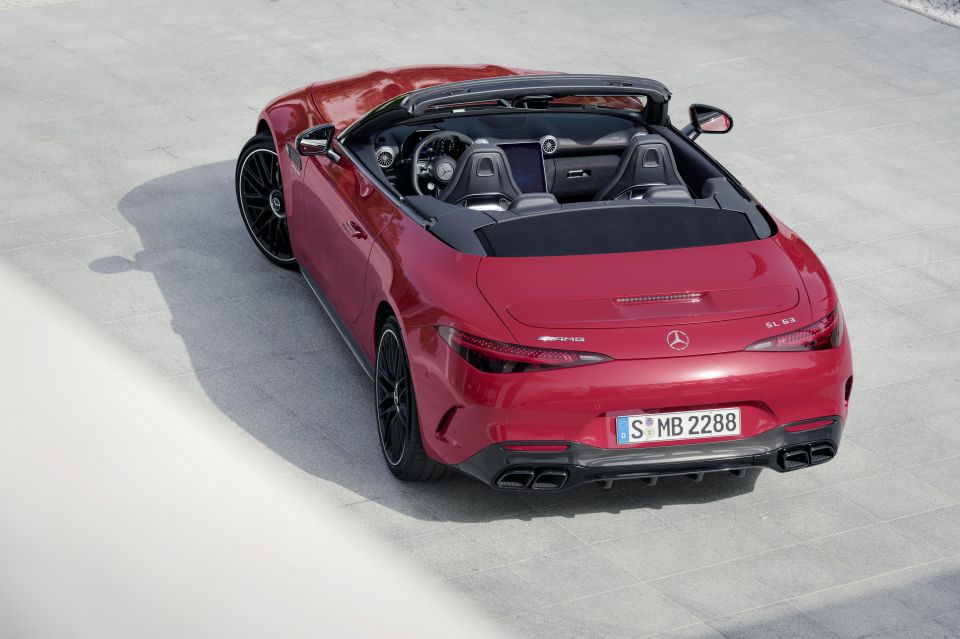

US Correspondent

US Correspondent


US Correspondent

US Correspondent
Where expert car reviews meet expert car buying – CarExpert gives you trusted advice, personalised service and real savings on your next new car.
The only thing more compelling than a brilliant automotive icon is a brilliantly revitalised automotive icon, one that marries the latest performance and technology advances to a stunning new look.
That’s what Mercedes set out to accomplish with the all new 2022 Mercedes-AMG SL, and our seat time behind its thick, leather-wrapped steering wheel confirms the maestros at Affalterbach succeeded.
Handing the SL’s redesign over to the performance-minded folks at AMG has, as expected, produced the most capable SL yet.

Now even the base SL55 comes standard with a 350kW twin-turbocharged 4.0-litre V8 plus all-wheel drive, all-wheel steering, and a zero-to-100 km/h time of 3.9 seconds. Stepping up the SL63 adds 80kW of power and drops the zero-to-100 run to 3.5 seconds.
Additional upgrades include the latest MBUX infotainment interface, the SL’s first rear seat since the 1980s, and its first retractable soft top since the early 2000s. The new top weighs less and lowers the SL’s center of gravity compared to the previous retractable hardtop. It also opens or closes in 15 seconds, at speeds up to 60 km/h.
Faster, more advanced, better looking. Do the folks at AMG do humans, too?
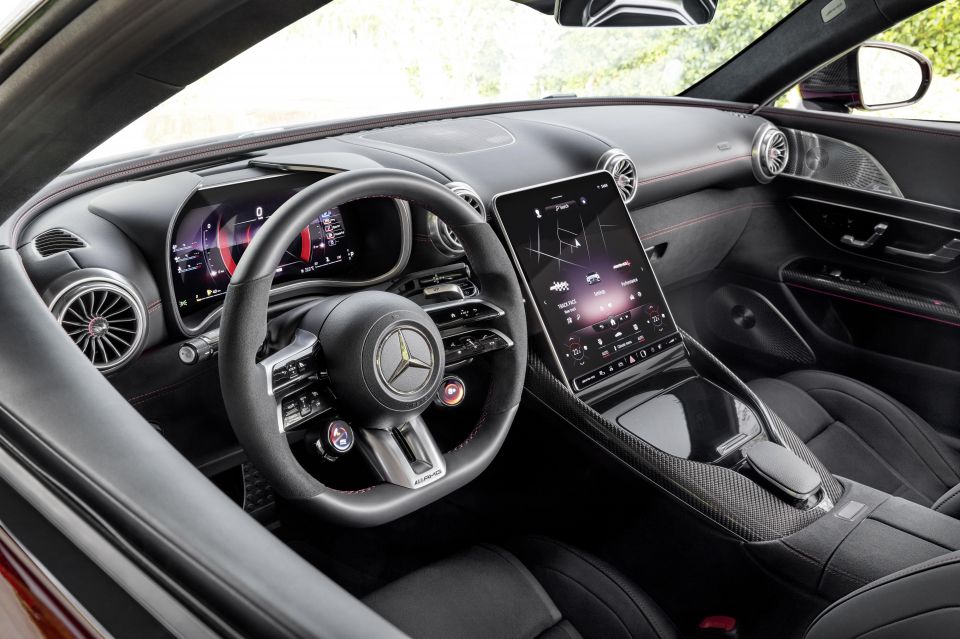
Australian pricing for the Mercedes-AMG SL hasn’t been confirmed yet, but should be released before it goes on sale later this year.
The previous SL started at $250,900 before on-roads, without standard all-wheel drive and four-wheel steering, and stretched as high as $317,240 list. We expect a significant price bump for the new SL, given its significant mechanical and technological upgrades for 2022.
A starting figure north of $290,000 for the SL55 wouldn’t surprise us, with the SL63 a healthy chunk above that.
That compares to $289,900 list for the newest BMW 850i xDrive Convertible, $264,966 list for a Jaguar F-Type P575 R AWD Coupe, or $318,500 list for a Porsche 911 Carrera 4 S drop top. All prices exclude on-road costs.
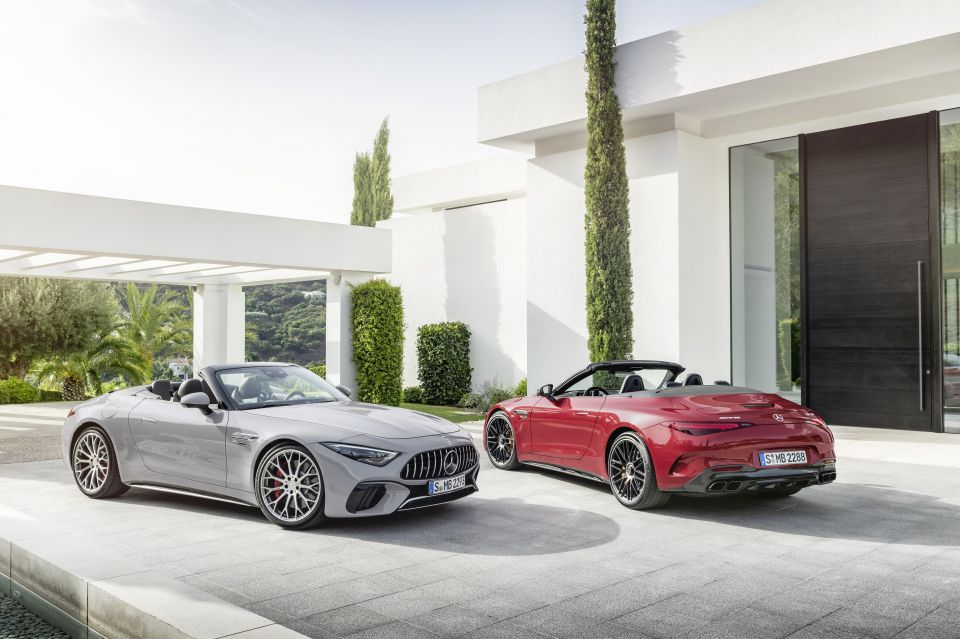
The list of advanced, high-tech features that come standard on the newest SL has grown substantially.
Highlights include:
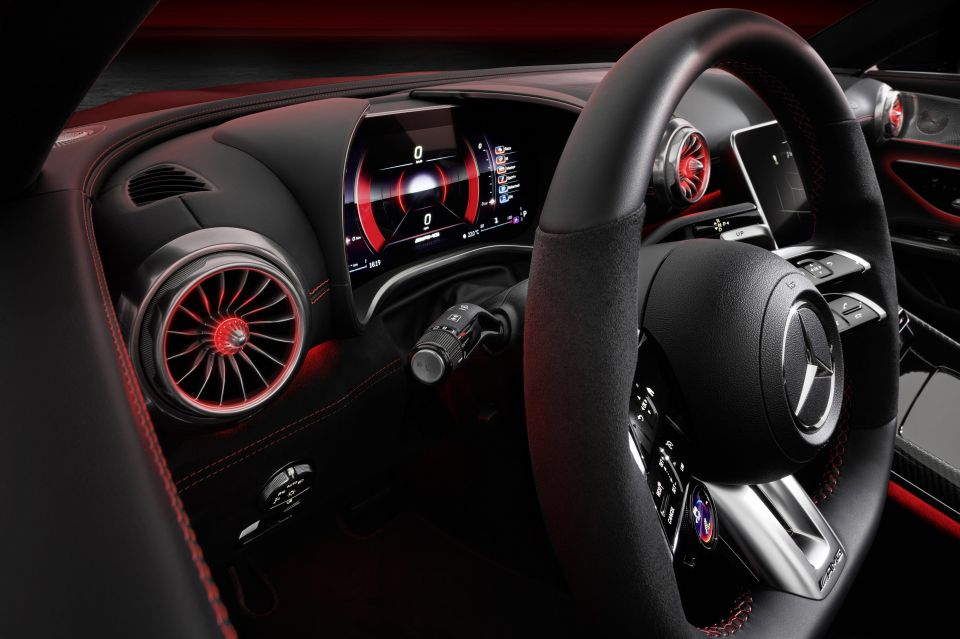
Optional features in other markets include:
We’ll have a better idea of local specifications and options in the coming months.
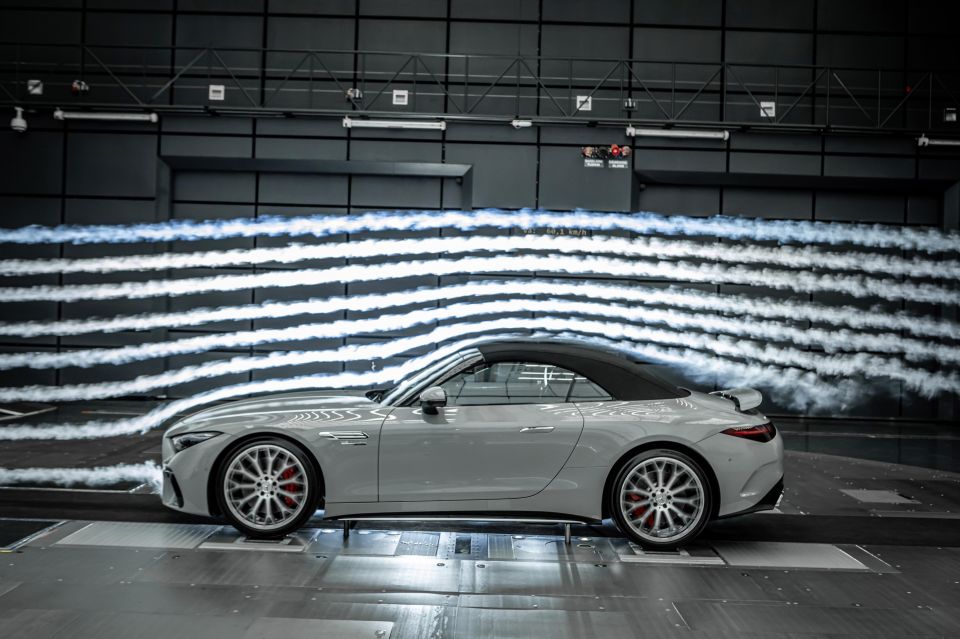
The Mercedes-AMG SL has not been tested by ANCAP or Euro NCAP, but it does come standard will a full suite of Mercedes-Benz safety tech.
The activity of these systems can now be easily monitored in the SL through a new instrument cluster 3D representation.
Standard safety systems include:
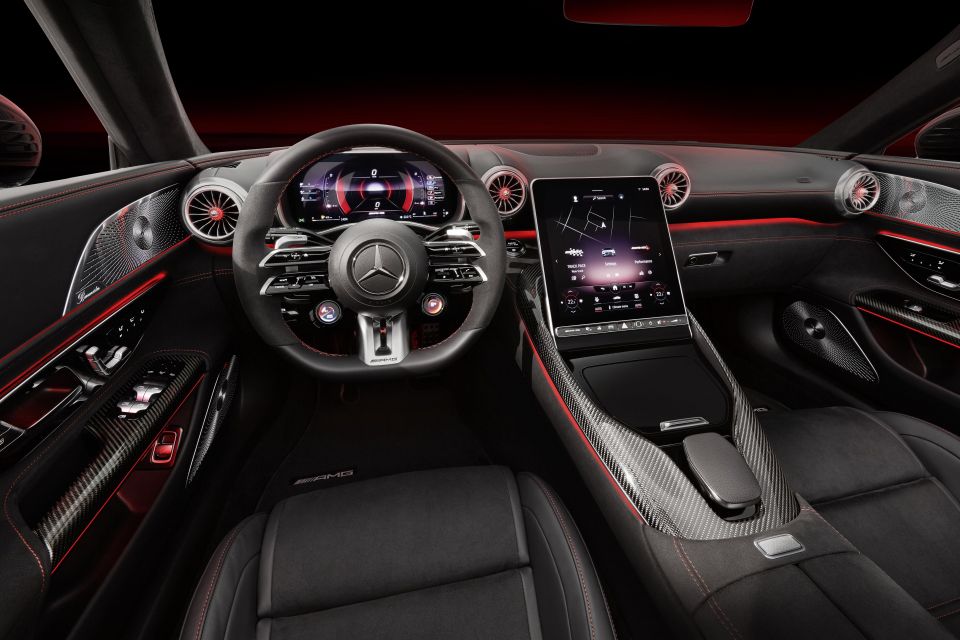
The SL’s interior could be described as old-school plush meets bleeding-edge tech.
The cabin is dominated by soft-touch materials, with standard leather sport seats that look stylish while providing an appealing blend of comfort and support.
Optional AMG performance seats include adjustable bolsters that automatically tighten in Sport, Sport+ and Race mode. Several cabin colours, including two-tone designs with contrasting stitching, are also available.
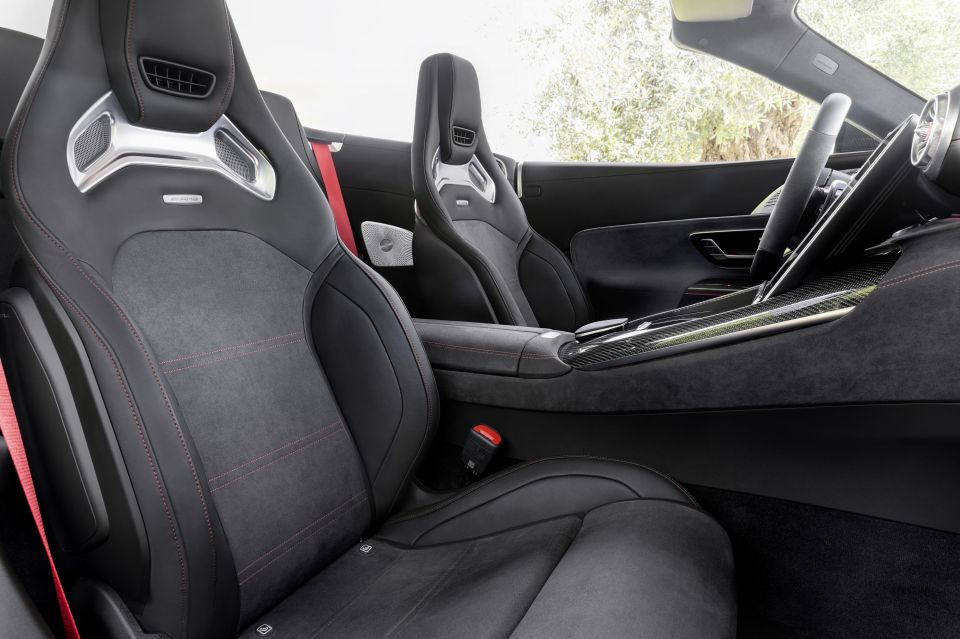
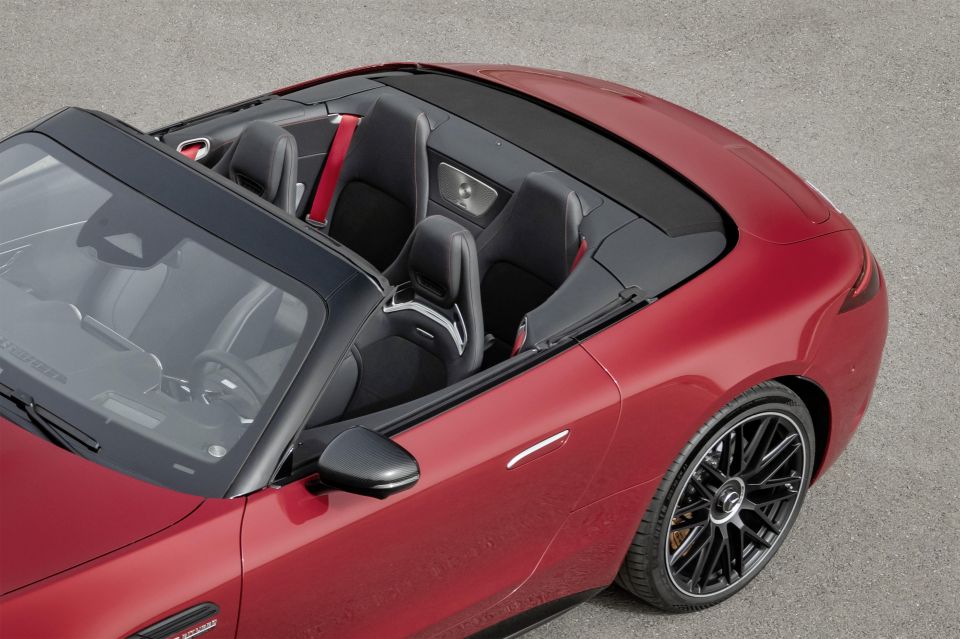
Probably the interior’s most impressive feature is a rear seat that, technically, provides four-passenger seating without upsetting the SL’s svelte exterior proportions. In reality, as with most sports car rear seats, no full-sized adult is going to fit back there.
But the seats do provide a convenient storage option without needing to access the SL’s 240-litre boot (213 litre with the top stowed).
The SL’s technology component manifests in a 12.3-inch digital instrument cluster paired with an 11.9-inch central touchscreen display, the latter of which offers a wide range of angles to combat glare when the top is down.
These screens can be controlled through touchpads on the spokes of the AMG-styled, flat-bottom steering wheel. The breadth and depth of features accessible through this latest MBUX interface is both impressive and intimidating.
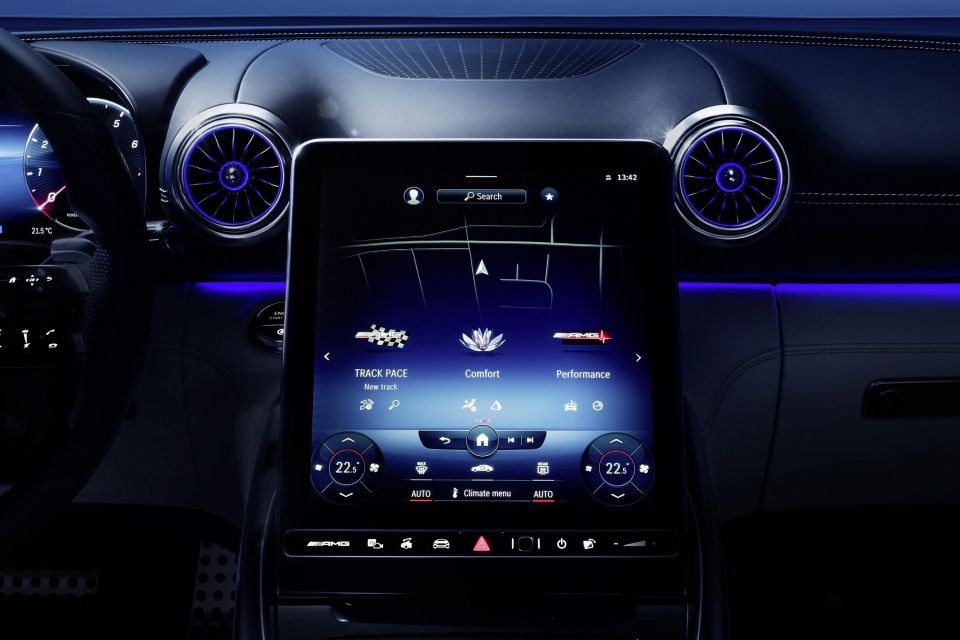
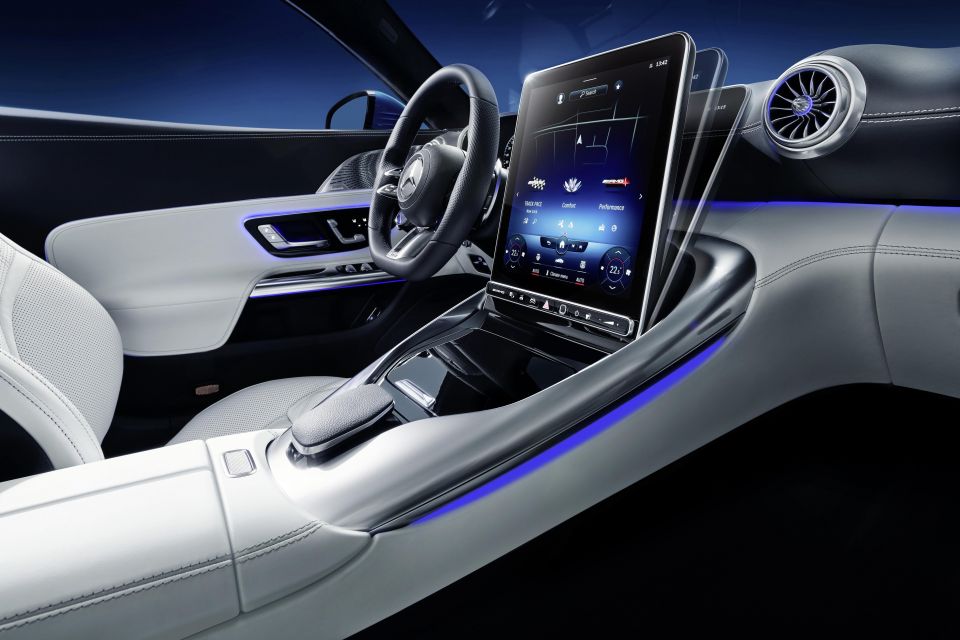
Muddle through the learning curve and you’ll find these controls are actually quite intuitive, making it easy to adjust everything from the SL’s drive modes to its cluster layout. And there are several cool gauge cluster options to choose from.
We were, however, disappointed at the lack of a dedicated volume knob, even with relatively effective volume swipe controls on the steering wheel and below the central touchscreen. And we never did figure out how to turn on the Airscarf or seat heaters, though with more seat time I’m sure we would have.
Thankfully, we never really needed the Airscarf or seat heaters, even during our chilly morning drive along the California coast, due to the SL’s superb air management with the top down.
With the side windows lowered and no rear wind blocker in place there’s almost zero buffeting at speeds below 120km/h. Raise the windows and deploy the air blocker, and you’ll find yourself looking up to confirm the top is still down.
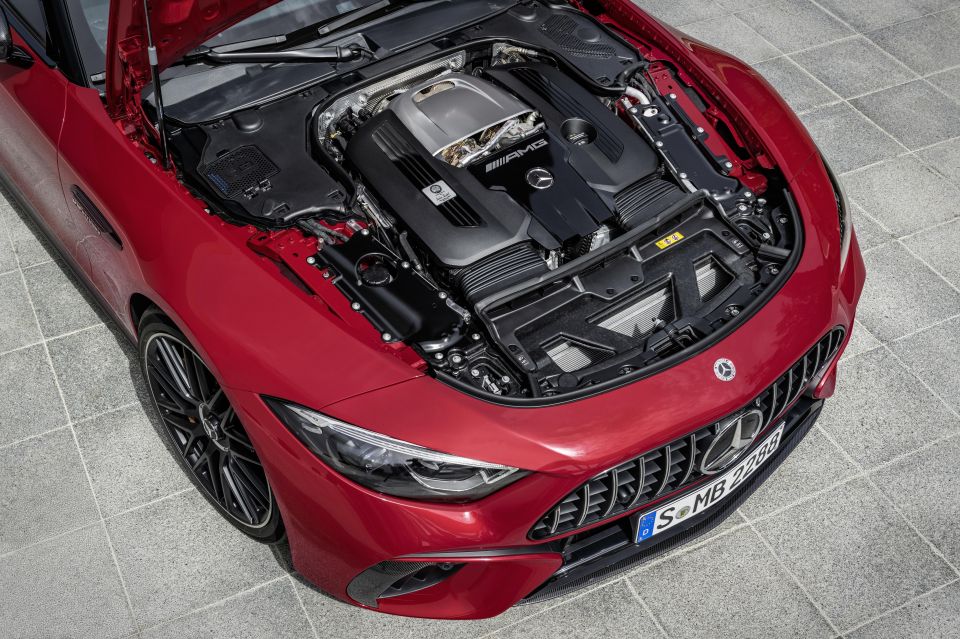
Mercedes-AMG has outfitted the SL with its tried-and-true 4.0-litre bi-turbo V8. But for this application the engine benefits from repositioned intercoolers and optimised intake and exhaust ducts. This allows the SL55’s V8 to produce 350kW and 700Nm, while higher boost pressure and improved airflow lets the SL63 achieve 430kW and 800Nm.
Both engines feed power to all four wheels through an AMG Speedshift nine-speed automatic transmission featuring a wet start-off clutch instead of a torque converter.
Mercedes says this clutch design reduces weight while increasing throttle response. Paddle shifters behind the steering wheel make manual gearshifts easy, though hardly necessary given how well the transmission picked gears on its own.
With zero-to-100 km/h times of 3.9 seconds for the SL55, and 3.5 seconds for the SL63, you can rightfully assume the new SL doesn’t lack for power or acceleration. A 315km/h top speed for the SL63 further confirms its performance potential.
But rest assured, a higher-performance hybrid version of the SL is in the works, and should arrive at Mercedes dealerships in the next 12 to 18 months.

There’s a longstanding ‘meatiness’ to AMG products that might not appeal to everyone, but is driving nirvana to fans of the brand.
Whether it’s the weighting of the steering, the dynamics of the chassis, or the tone of the exhaust system, previous SLs never really displayed that meatiness. Even the AMG versions.
That changes with the 2022 Mercedes-AMG SL. Riding on a completely new composite aluminium structure, with 18-per-cent greater rigidity than the outgoing model, the new SL also leverages the brand’s first use of an advanced multi-link front suspension.
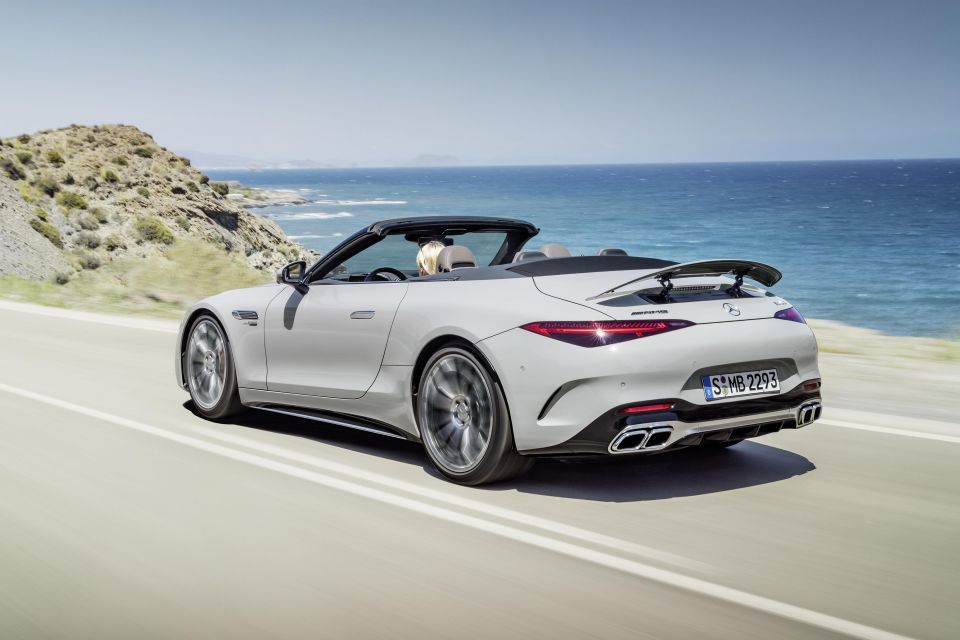
Roll in standard all-wheel drive and all-wheel steering systems, plus a lower centre of gravity from the lighter, retractable cloth roof, and you wonder how this model couldn’t set a new standard in SL driving dynamics.
Of course it does, somehow integrating that trademark ‘meatiness’ of AMG with a longer, wider (and prettier) SL body, making it feel lighter on its feet and more responsive to driver inputs than any previous SL.
And then there’s the sound…
The SL55 trumpets its sporting intentions as effectively as any American muscle car, enticing you to bring the revs a tad higher than necessary on every upshift. If you never hear the SL63 you’ll be fully charmed by 55’s siren song, but if do hear the SL63, you’ll realise there’s yet another dimension to the exhaust-based symphony.
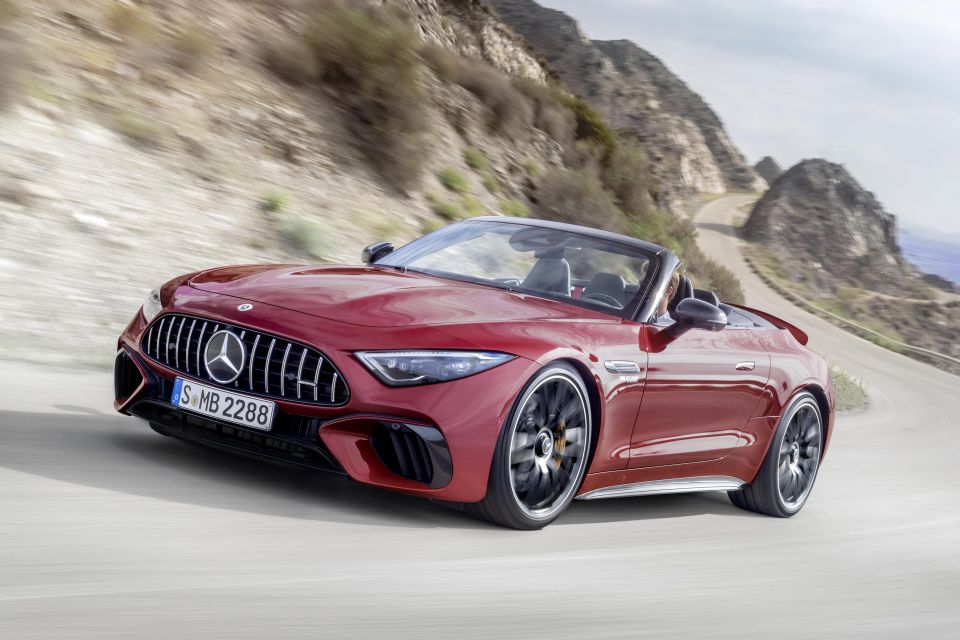
We could genuinely be happy with either model, and given the level of standard equipment on the SL55 it’s probably the wiser choice – and automotive enthusiasts always make the wise choice, right?
One aspect of the SL’s dynamics that left us slightly disappointed was brake pedal modulation. AMG has tuned the pedal to move a relatively short distance before it hits a wall, at which point it stops moving and simply requires increasing pedal pressure to elicit increased brake force.
This characteristic didn’t worry us once we realised that’s how the brake system is tuned. But we would suggest increased pedal movement, along with increased brake pressure, might make it easier to modulate the SL’s deceleration, especially under hard braking.
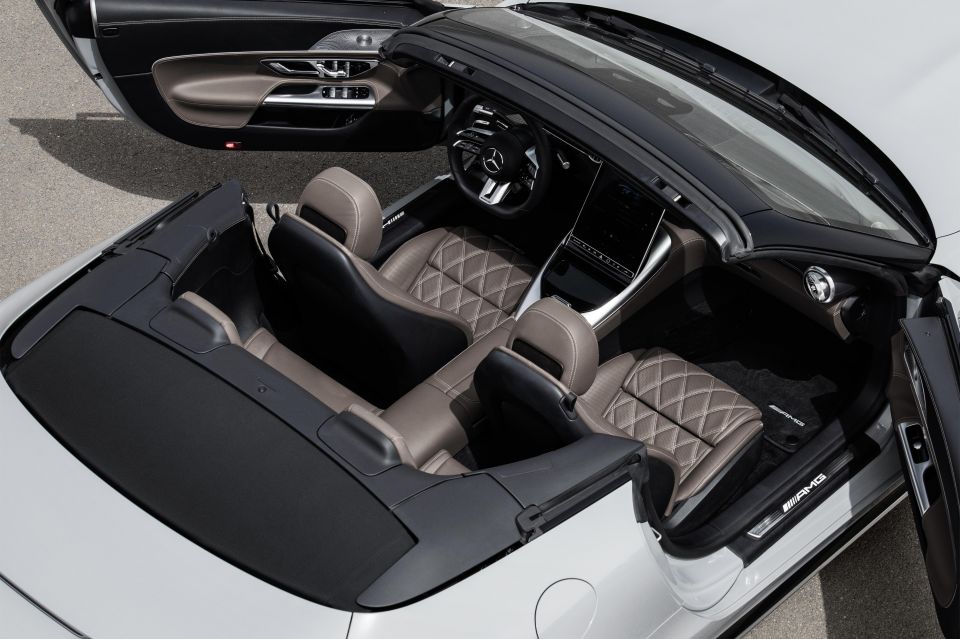
Where expert car reviews meet expert car buying – CarExpert gives you trusted advice, personalised service and real savings on your next new car.
Mercedes-AMG covers its vehicles in Australia with a five-year, unlimited-kilometre warranty, outlasting the three-year warranties offered by BMW and Porsche.
Fuel use in the SL is rated between 11.8L/100km and 12.7L/100km depending on variant, worse than the BMW M8 Competition’s 10.4L/100km, the Jaguar F-Type R AWD’s 10.3L/100km, and the 911 Carrera 4S’ 9.6L/100km.
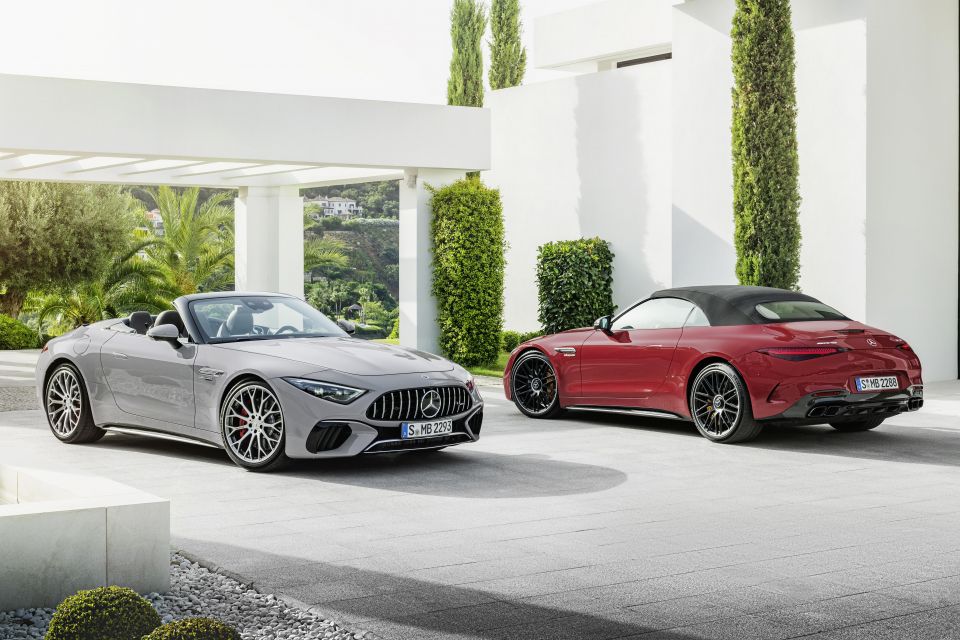
The spirit of AMG – which has essentially consisted of taking otherwise responsible Mercedes-Benz products and turning them into high-end hooligan devices – continues (thankfully!) with the newest SL.
That’s not to suggest the new SL feels the slightest bit compromised from a luxury standpoint. Whether you’re talking long-distance seat comfort, top-down wind protection, or advanced driver-assistance tech, the 2022 Mercedes-AMG SL will satisfy the highest of high-maintenance occupants.
But where previous AMG-badged SLs never lacked for power, they also never felt like 100 per cent, thoroughly dedicated performance cars. This one does.

Credit the increasing role AMG plays in today’s Mercedes-Benz product development.
In this case, with MB’s performance division overseeing every aspect of the new SL’s design and engineering, it shouldn’t surprise anyone that it feels like the best-sorted SL ever.
And if that combination of traits – uncompromised luxury meets uncompromised performance – appeals to you, you should probably get on a waiting list. Right now.
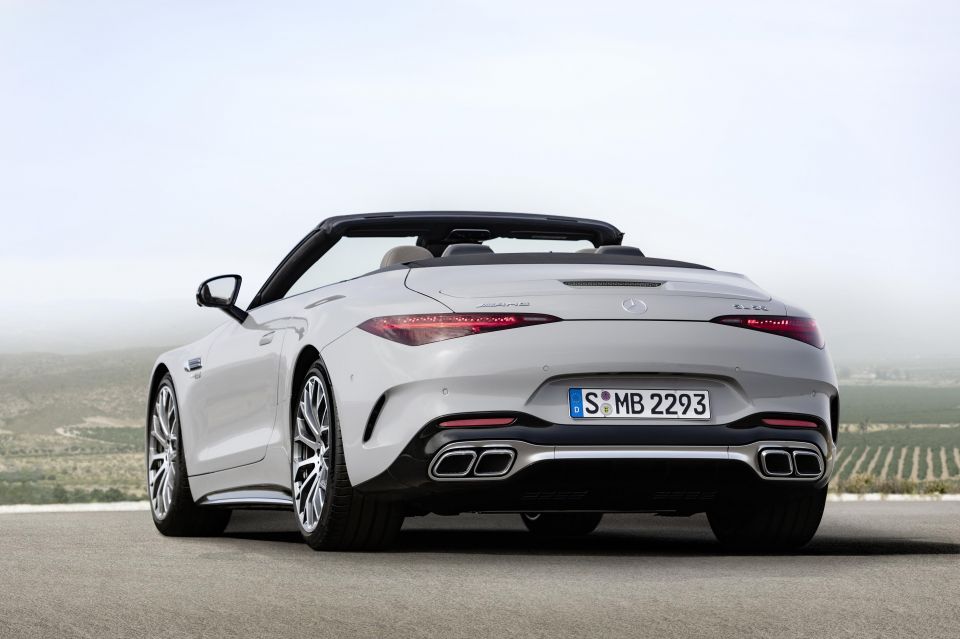
Click the images for the full gallery
Where expert car reviews meet expert car buying – CarExpert gives you trusted advice, personalised service and real savings on your next new car.


Gautam Sharma
7 Months Ago
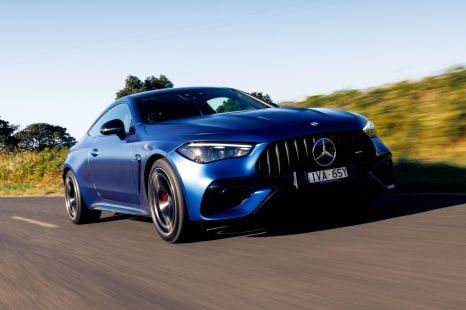

Josh Nevett
6 Months Ago
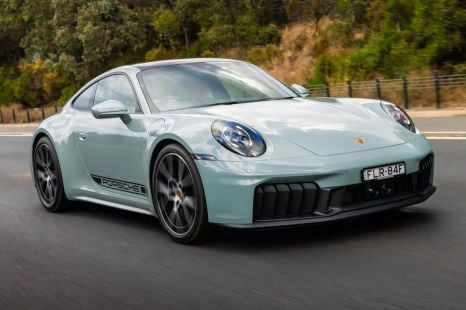

Alborz Fallah
5 Months Ago


William Stopford
2 Months Ago


James Wong
25 Days Ago
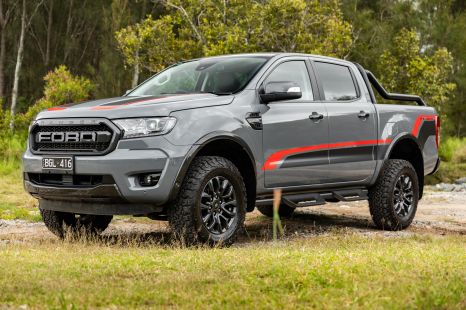

William Stopford
25 Days Ago